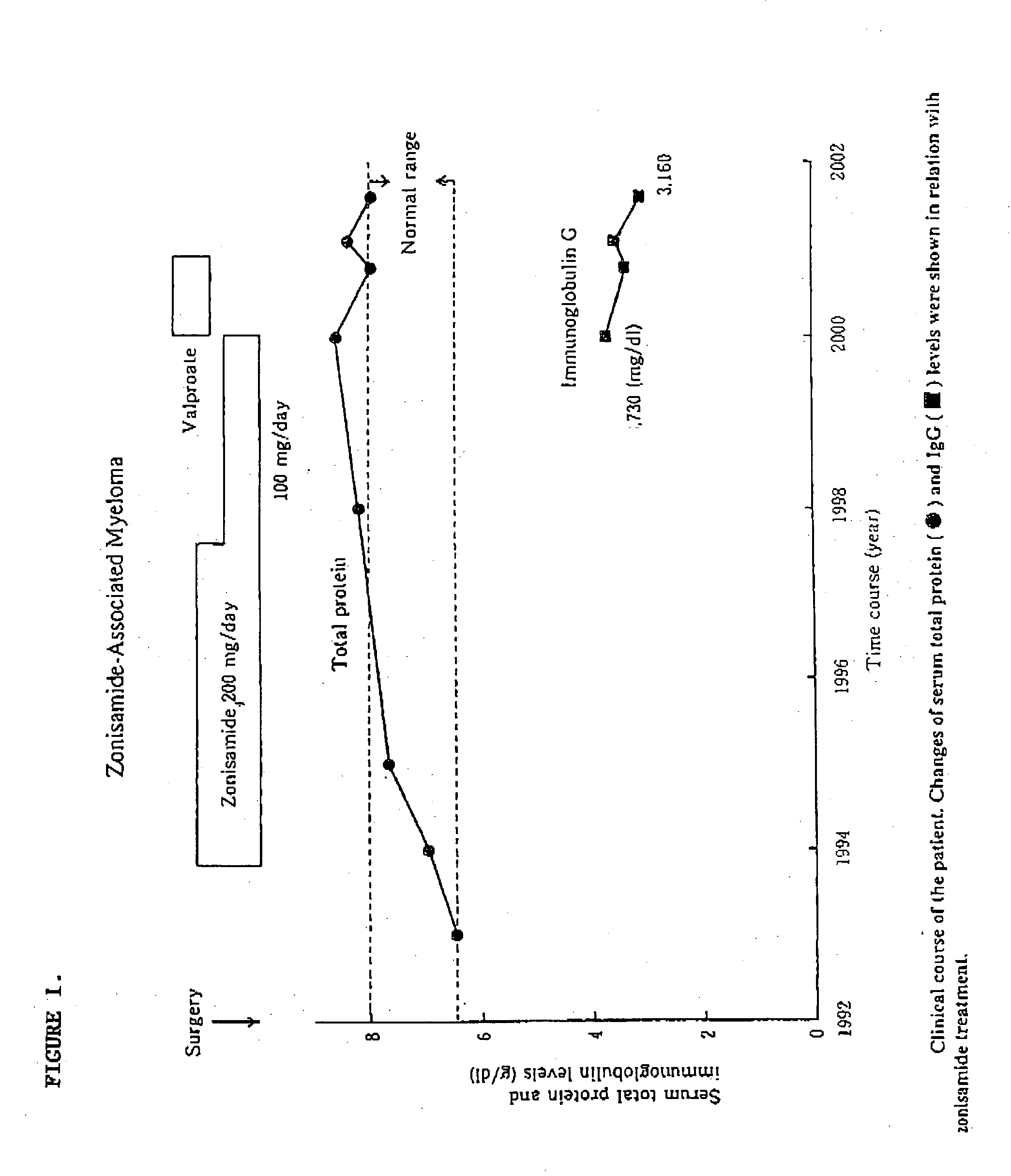Methods of using zonisamide as an adjunctive therapy for partial seizures
a technology of zonisamide and zonisamide, which is applied in the field of adjunctive therapy of zonisamide for partial seizures, can solve the problems of rare toxicity profiles of drugs, and achieve the effect of quickly recognizing and minimizing serious side effects, reducing or tapering the effect of zonisamid
- Summary
- Abstract
- Description
- Claims
- Application Information
AI Technical Summary
Benefits of technology
Problems solved by technology
Method used
Image
Examples
example 1
[0038] A 39-year old man was found to have hyperproteinemia (8.6 g / dl). He had neither personal history, nor apparent family history, of exposure to radiation or chemotherapy. Ten years prior he had had surgical treatment of a subarachnoid hemorrhage due to an arteriovenous malformation. As a result of the brain injury caused by the hemorrhage and / or reparative surgery, he has developed generalized seizures which had been treated with the anticonvulsant drug zonisamide at a daily dose of 200 mg / day for about 5 years followed by a dosage reduction to 100 mg / day. He had been taking no other drug during this ten-year period.
[0039] By review of his medical record, the level of serum total protein had gradually increased from 6.5 g / dl at year 3 of treatment to 8.2 g / dl in year 8. The patient presented with no complaint of bone pain. Laboratory examination showed an elevated serum level of immunoglobulin G IgG (3.68 g / dl) with suppressed levels of IgM 38 mg / dl) and IgA (40 mg / dl). Protei...
PUM
| Property | Measurement | Unit |
|---|---|---|
| frequency | aaaaa | aaaaa |
| weight loss | aaaaa | aaaaa |
| time | aaaaa | aaaaa |
Abstract
Description
Claims
Application Information
 Login to View More
Login to View More - R&D
- Intellectual Property
- Life Sciences
- Materials
- Tech Scout
- Unparalleled Data Quality
- Higher Quality Content
- 60% Fewer Hallucinations
Browse by: Latest US Patents, China's latest patents, Technical Efficacy Thesaurus, Application Domain, Technology Topic, Popular Technical Reports.
© 2025 PatSnap. All rights reserved.Legal|Privacy policy|Modern Slavery Act Transparency Statement|Sitemap|About US| Contact US: help@patsnap.com

